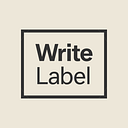Effective Literary Devices For Copywriters
by Pamela Ross
Yes, copywriting is an art unto itself— but that doesn’t mean other forms of writing don’t apply. There can’t be creative output without input, and reading great writing is an essential way to improve your skills. Though crafting billboard copy might seem worlds away from Shakespeare writing verse by candlelight, literary devices can be used to strengthen your copywriting. Such devices help engage prospects and make abstract concepts more concrete, appealing to both the imagination and a sense of pragmatism. I’ve outlined a few below for potential use — but don’t get carried away and start writing with a quill and calling yourself “The Bard” (see Humor).
Alliteration
Alliteration is the repetition of a consonant sound in a series of words, e.g., “Peter Piper picked a peck of pickled peppers.” The key to using alliteration effectively is moderation; too much and the result is sing song-y, almost like you’d see in a fairy tale. Unless that suits the client’s brand, it’s best to pepper in alliteration: “Searching for a sensational swimsuit? Merwear has what you need to get suited up!” Alliteration functions as a linguistic cue to perk up ears and demand attention — especially useful in radio scripts when listeners are often occupied.
Metaphors and Similes
Having flashbacks to middle school yet? As Grammarly explains, “Similes use the words like or as to compare things — ‘Life is like a box of chocolates.’ In contrast, metaphors directly state a comparison — ‘Love is a battlefield.” As you can tell, similes and metaphors create vivid imagery and make abstract concepts more concrete. They’re a good tool to have in your creative copywriting arsenal. Consider which is more engaging: “Are your pipes leaking? Call Bleakley Plumbing A-SAP!” versus “Do your pipes resemble waterfalls? Call Bleakley Plumbing A-SAP!” Comparing leaky pipes to waterfalls conveys the dilemma of a plumbing problem in a vivid, immediate way (and yes, hyperbole was used as well!).
Imagery
Charles Dickens, besides being one of the foremost Victorian novelists, was known for his mastery of imagery. Here’s how he introduces the character Miss Havisham in Great Expectations:
“She was dressed in rich materials — satins, and lace, and silks — all of white. Her shoes were white. And she had a long white veil dependent from her hair, and she had bridal flowers in her hair, but her hair was white…She had not quite finished dressing, for she had but one shoe on — the other was on the table near her hand — her veil was half arranged, her watch and chain were not put on, and some lace for her bosom lay with those trinkets and with her handkerchief, and gloves, and some flowers, and a prayer-book, all confusedly heaped about the looking-glass.”
With his descriptive language — and admitted penchant for long sentences! — Dickens creates an incredibly vivid portrait of the elderly spinster. If you combine Dickens’ flair for imagery with the concision of copywriting, you can also paint a picture in people’s minds: “Has your lawn become a labyrinth of tall grass, creeping roots, and buzzing pests that divebomb visitors? Let Craig’s Lawncare take care of things!”
Humor
Writing funny isn’t necessarily easy — but there will always be demand for creatives who do it well. When deployed skillfully, humor engages consumers like few other devices do, and can entertain people instead of just inform them. Listen below to a Bud Light ad that uses light-hearted humor to reach male listeners:
This spot cleverly conveys the man’s inner monologue while making several jokes, all within the context of a married couple’s everyday conversation. Not bad considering the writers were probably wasted when they came up with it (see what I did there?). If you find using humor challenging, you can always turn to Write Label, which specializes in funny copy for scripts, social posts, and more.
These are just a few of the many literary devices that can enhance copywriting when used appropriately. As you hone your abilities, don’t forget to take in examples of great writing across genres to keep learning and stay inspired. Need some recommendations? Here is BBC Arts’ list of 100 influential books.
